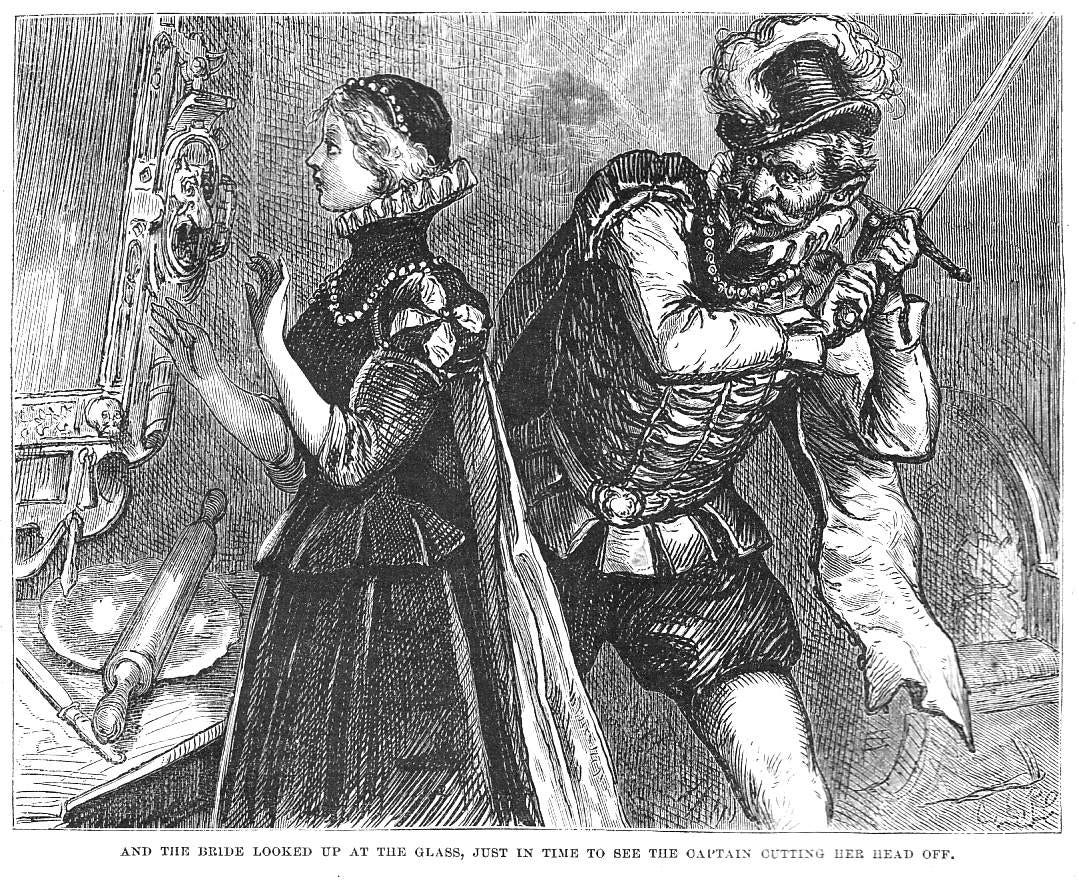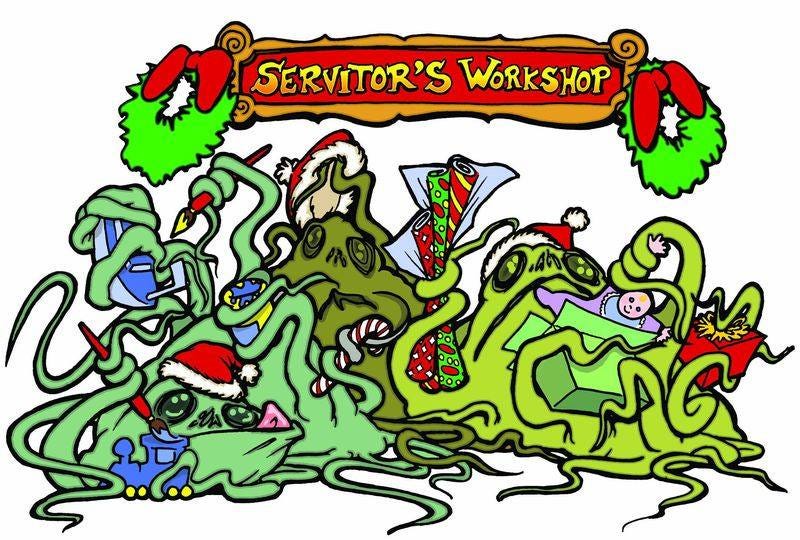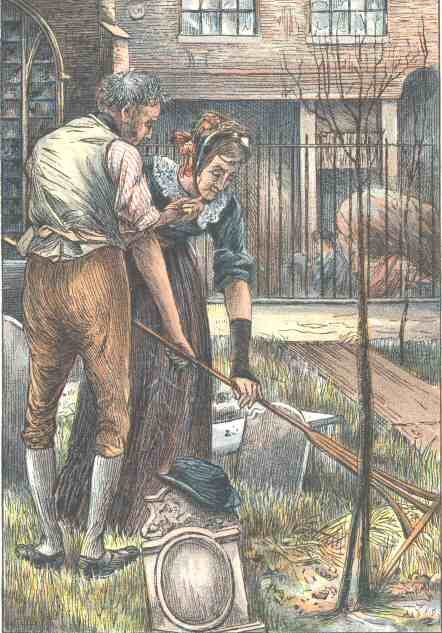Weekly Geekly Rundown for December 15, 2023
Christmas All the Way
Horror Stories at Christmas?
One of the things that I’ve become used to around Christmastime is for Hollywood to do a bit of “counter programming” where they mix a slasher film or monster movie in with the Oscar and Romantic Comedy fare that most associate with the season. Over the years I’ve seen many people comment that they thought the release of horror films around the Holiday was just another salvo in the War Against Christmas™1 , but this is not the case at all. There are two key points to consider regarding why Hollywood would release horror stories around this time of year. One is profit oriented and the other is tradition.
In California, Southern California at least, “Hollywood” is called The Industry. Though Southern California has a tremendously diverse economy that includes shipping, pharmaceuticals, oil, manufacturing, food, banking, and much more, the industry that dominates the consciousness of everyone in the region is The Entertainment Industry. RAND and JPL may make their homes in sunny Southern California, but when you talk with someone in the region they all have a screenplay in their back pocket. Very few have an innovative militarily applicable strategy or complex space probe design in that same space. Film and TV rule the region and The Industry is about one thing and one thing alone, generating the maximum revenue. Sure, individual artists want to make things that express their vision. Some mid-level development VPs have agendas they want to push. All of that is true, but The Industry is about money first.
One way to make money is the Red Ocean/Blue Ocean strategy. This is a strategy where you look for a market space with minimal competition and try to develop products there. In Film/TV, this means engaging in either off-season or counter-programming. By off-season programming, I’m referring to what USA Network used to do in the 90s and 00s. The normal television season runs from September to December, takes a hiatus, then runs from January through May. Then there are upfronts where the networks sell the pilots for the next fall season to advertisers. It’s a tried and true cycle and one that Rob Long’s book Set Up, Joke, Set Up, Joke, covers perfectly and hilariously. I’d also recommend the discontinued and impossible to find Showtime series Beggars and Choosers. That’s the Red Ocean, it’s where all the sharks are2 and they are so ravenous that the ocean is red.
Summer and the Winter hiatus (read Christmas) are the Blue Ocean. It’s mostly free of sharks, at least in TV. Summer is the motion picture Red Ocean. USA Network used to use the Summer and the Winter Hiatus to run their off-season programming. Monk, Burn Notice, and a host of other shows started their season during this down time. TNT and TBS also played this strategy making it more red and the development of streaming has ensured that it’s almost always a Red Ocean media environment.
So one strategy is to find the off-season market another is to find an underserved market. The perfect examples of companies taking advantage of underserved market Red Ocean/Blue Ocean opportunities are the Hallmark and Great American Family television networks. Hallmark took advantage of the decline in Romantic Comedies and a desire for new Christmas entertainment. Great American Family took advantage of a segment of the Hallmark audience who were disappointed with certain social aspects of Hallmark movies. As you might guess, I’m not getting into the politics behind this. Those exist, see my note below and keep in mind that I study political polarization, but those only reinforce the strategy as viable. Take a look at Great American Family’s ratings since its launch.
These are not Hallmark ratings, it’s still very much the dominant player, but there is year to year growth with a slightly higher peak each year. The key to a Blue Ocean strategy is to find a new market, or an undervalued property. If that reference to undervalued property sounds familiar, it is the underlying principle of Moneyball. When the A’s started using Moneyball, the undervalued asset was On Base Percentage plus Slugging. Modern analytics, and real time movement tracking, have changed what the undervalued assets are, but leveraging them and maximizing them still leads to success. It’s just that now rich teams like the Dodgers and Red Sox know to look for what’s undervalued too. That didn’t stop a poor team like Tampa Bay from being among the best in the league. Finding the right analysts is vital.
What does this have to do with horror movies being released at Christmas time? Well, horror fans are horror fans and they are always willing to watch their favorite genre. If the theaters are filled with Oscar hopefuls, Romantic Comedies (which we saw a bit of a return to this year), and maybe a seasonal picture (this varies from year to year), then that’s a Red Ocean for those kinds of films. It’s also a Blue Ocean for horror movies. It’s a great time to do some counter programing and make money off an underserved audience.
That’s the profit oriented reason that horror movies/scary stories come out around Christmas. The other reason is tradition. Medieval Europeans often told tales of the supernatural in the winter months as they believed this was when the spirits in purgatory were most restless. This tradition was perfected in Victorian England where Christmas ghost stories became a tradition, a tradition that resulted in one of the greatest Christmas stories of all-time A Christmas Carol. But the tale of Ebenezer Scrooge isn’t the only horror story Dickens wrote, he shared a number of them in his book The Uncommercial Traveller of particular note are his Nurse Stories. These are tales supposedly told to him by his cruel Nanny when he was a child. I only recently learned of their existence, and of the tale of Captain Murderer, this past week. They have been added to my own Christmas reading. Captain Murderer is a Bluebeard character, whose tale was regularly used to scare the Dickens out of young Charles.
Give it a listen.
Around the Substack Community
takes a look at Acererak’s D&D Treasure Pack Dice Sets and gives them a positive review. I got one of the exclusive sets when I purchased mine (liquid green center) and I really like the tokens that come with the dice. Collectible dice is a pretty good “Blue Ocean” idea. Gamers always want more dice and what better way to leverage that impulse than with a collectible offering. gets into the scary part of the season and reminds us that he has written a wintery tale of terror. I’m a fan of Lou’s Norrøngard setting and will certainly be checking this out. gives us a glimpse at the recent box office and contextualizes the December market for us.Finally,
gives us his recommendations for solo games to gift to your friends this year.Weekly Luke Y Thompson and Courtney Howard Film Article Cavalcade
Picks from Luke’s Work
Speaking of horror films, Luke has an interesting discussion of the most controversial costume changes in horror film history up over at SlashFilm.
It’s not every day that a sequel to a film comes out twenty years later, but Luke’s review of Chicken Run: Dawn of the Nugget for AV Club argues that sometimes a gap that large can be worth the wait. Aardman tends to deliver high quality animated films and I cannot wait to see this one.
Over at SuperHeroHype Luke does what good writers do and takes a controversial statement and examines it from a new angle. In this case, he looks at Martin Scorcese’s quote about superhero films and theme park rides and asks if theme park rides can be cinema. I think it’s an interesting question. Of course, I also think that the best superhero films are “the cinema of human beings trying to convey emotional, psychological experiences to another human being.” The reason Superman I and II work so well is this very thing and it’s why Superman has a secret identity at all. That writers forget why Superman needs, and he needs, a secret identity doesn’t mean that isn’t there. There’s a reason John Williams took Aaron Copland’s Fanfare for the Common Man and transformed it into the Superman theme. It is because Superman wants and needs to connect with the common man. Richard Donner understood this and it’s why his Superman is better cinema than the Castle Defense video game that is Avengers Age of Ultron3.
Thoughts from Courtney Howard
Courtney gives us a glimpse at some of the big impact acting performances of the year over at Variety.
I’m personally excited about Rebel Moon, but Courtney Howard’s highly critical review of the film over at FreshFiction has one of the best opening sentences I’ve read in a long time, “REBEL MOON – PART 1: A CHILD OF FIRE plays like we’re watching Zack Snyder plagiarize his homework in real time.” Ouch. Between this and
‘s comment that it might have been overly edited to get a PG-13 rating, I can already see people demanding the Snyder Cut again.Book Recommendation
If you couldn’t tell by the long opening, I’m recommending The Uncommercial Traveller as this week’s readings. I’m a fan of Dickens, though not so much that I knew about this before this week, and I’ve been enjoying my read through the Nurse Stories.
Music Recommendation
I’m shifting from pop to classic this week. Where last week I defended Wham!’s Last Christmas, this week I’m championing one of the all-time great Christmas songs. It’s not a religious song, but it is a beautiful and heartfelt one filled with love and nostalgia. I’m, of course, referring to Bing Crosby’s White Christmas.
Movie Recommendation
I’m sticking with the classics here and championing a film that includes Bing Crosby’s iconic song. White Christmas is one of the best films ever made, let alone best Christmas films, because it works on so many levels. It features wonderful singing from Bing and Rosemary Clooney. It has wonderful physical comedy. Watch the scene where Bing Crosby and Danny Kaye are chatting as they change their clothes. The way they toss items to one another casually must have taken dozens of takes to get right. It’s a delicately choreographed humorous scene that shows just how much time the pair have been spending together. The film also contains one of my favorite dance numbers ever. While Gene Kelly is my favorite musical/dance star (Fred Astaire is a close second), “The Best Things Happen While You're Dancing" with Danny Kaye and Vera-Ellen tells the complete tale of a romance as you watch. Not only are the pair shipping their friend/sibling with each other, they are falling in love. It’s a full movie in five minutes and it is beautiful to watch. From Kaye’s suit, to Vera-Ellen’s dress. Every thing is perfect.
But there are a couple of things that aren’t typically talked about when discussing White Christmas, chief among them is how emotionally dark the foundation of the film is. The underlying tone is one of tragedy and sorrow. A tragedy and sorrow that are overcome with love and family, but tragedy and sorrow nonetheless.
Let’s start at the beginning.
White Christmas begins on Christmas Eve in 1944 and while the 151st Armored Division is a fictional military unit, the set design and timing make it clear that the setting is the Battle of the Bulge. In our 1944, Bing Crosby performed White Christmas in front of 100,000 U.S. soldiers in Northern France a few days before many of them would die in that very battle. Given the line “you’ll be moving to the front,” one can imagine that the 151st is at least partially based on the 4th Armored Division of Patton’s 3rd Army, maybe even Abrams’ 37th Armor Regiment. The Battle of the Bulge is one of the most desperate battles of WWII and the best episodes of Band of Brothers depict how desperate the situation was, in particular the Bastogne episode where Eugene finds love and tragedy. Our protagonists served in the Battle of the Bulge and one saved the other’s life, though he exaggerates at what cost. The general led the men through the hardest part, as the liberation of the soldiers happens after Christmas 1944.
Add to this back drop that the General the main characters move heaven and earth to help in the story lives with only his housekeeper and his granddaughter. That’s right his granddaughter lives with him. There is no mention of parents. The implication, and the age of the granddaughter, suggest that she was born before the war, that her father died during the war, and that the mom passed away some time in the interregnum. This isn’t touched upon explicitly. It’s just there. It’s there in a way that would be recognizable to anyone living in 1954, or anyone who has seen The Best Years of Our Lives. The Second World War left scars across American society. These scars aren’t often discussed in modern film, since we acquired them defeating genocidal evil, but they were discussed at the time in works like The Best Years of Our Lives and The Man in the Gray Flannel Suit.
I cry every time I watch White Christmas. The pain of loss is ever present in the film. It is muted by all the Technicolor beauty, but it is there in the shadows.
As a person who is devoutly religious, but who also has no patience for Satanic Panic nonsense, my own thoughts about any War on Christmas are pretty nuanced. While I do not doubt that political polarization has expanded to include the Christmas season, I’m of the opinion that most talk about a War on Christmas is the result of the 24 hour news cycle and the desire to generate revenue. Outrage sells. Fear sells. However, as I see atheist groups mocking religious organizations and the religious around this time of year, I see what Evangelicals are worried about. I’m just of the opinion that as the War on Christmas news story is a product of a rage revenue cycle, so the actual and very limited War on Christmas waged by atheist groups is a kind of trolling by a small minority and not a wide spread phenomenon. One side seeks to gain attention and another is more than willing to give them the headspace.
And if you haven’t seen the movie Swimming with the Sharks, watch it now.
The final scenes are literally the equivalent of choosing the right meeple to defend a castle/McGuffin.











Thank you for the article mention, Christian! What was the name of the dice set you picked?
Great American Family is still fairly new so their movies still have a heavy Hallmark influence but it'll be interesting to see how they differentiate themselves in the future.